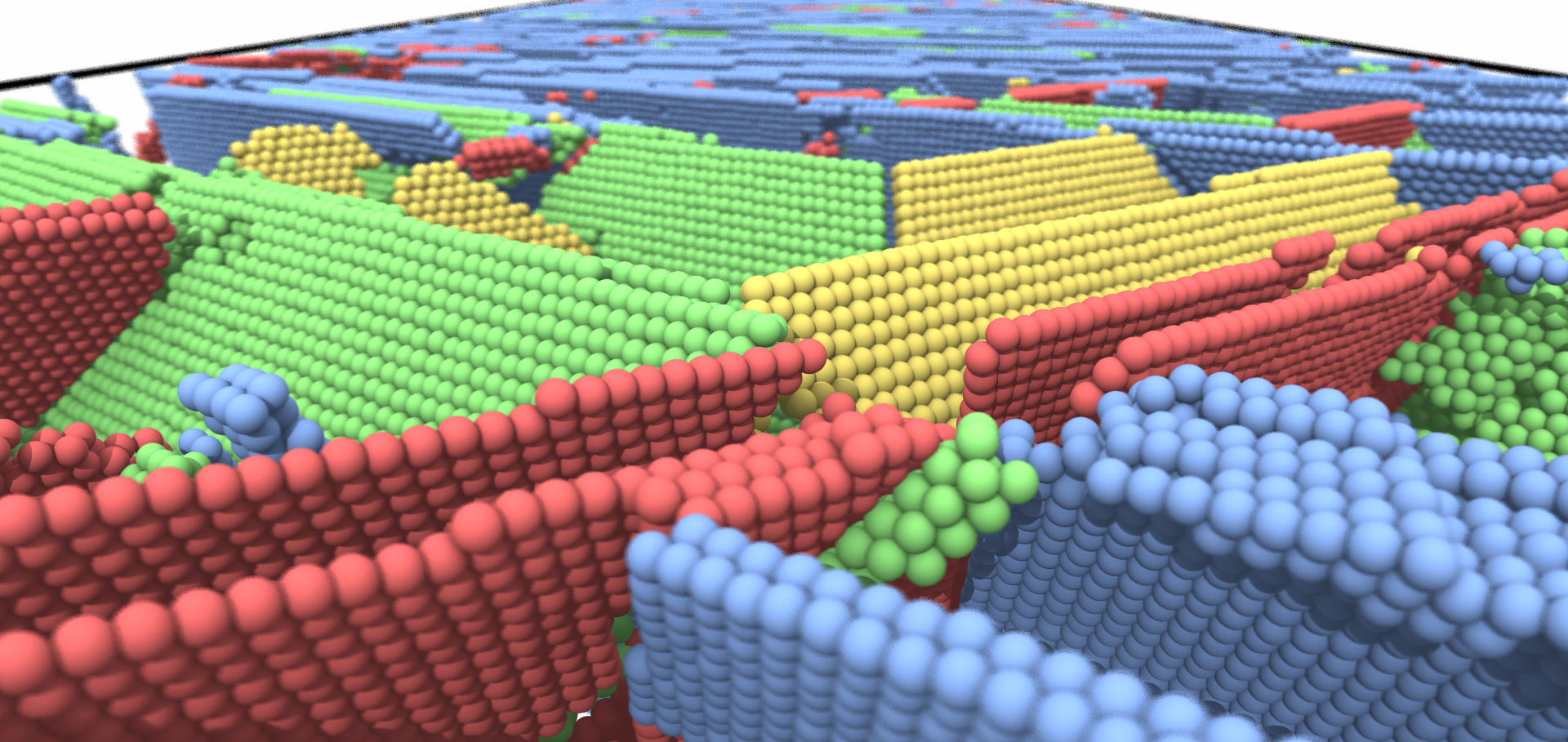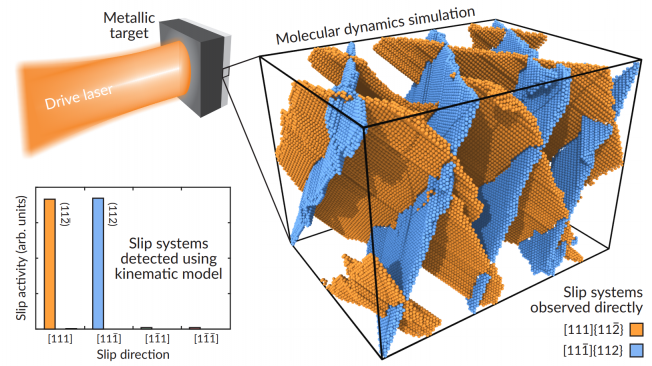Shock compression experiments using the DiPOLE 100-X laser on the high energy density instrument at the European x-ray free electron laser: quantitative structural analysis of liquid Sn
Journal of Applied Physics AIP Publishing 135:16 (2024) 165902
Abstract:
X-ray free electron laser (XFEL) sources coupled to high-power laser systems offer an avenue to study the structural dynamics of materials at extreme pressures and temperatures. The recent commissioning of the DiPOLE 100-X laser on the high energy density (HED) instrument at the European XFEL represents the state-of-the-art in combining x-ray diffraction with laser compression, allowing for compressed materials to be probed in unprecedented detail. Here, we report quantitative structural measurements of molten Sn compressed to 85(5) GPa and ∼ 3500 K. The capabilities of the HED instrument enable liquid density measurements with an uncertainty of ∼ 1 % at conditions which are extremely challenging to reach via static compression methods. We discuss best practices for conducting liquid diffraction dynamic compression experiments and the necessary intensity corrections which allow for accurate quantitative analysis. We also provide a polyimide ablation pressure vs input laser energy for the DiPOLE 100-X drive laser which will serve future users of the HED instrument.Crystal plasticity finite element simulation of lattice rotation and x-ray diffraction during laser shock compression of tantalum
Physical Review Materials American Physical Society 7:11 (2023) 113608
Abstract:
We present a crystal plasticity model tailored for high-pressure, high-strain-rate conditions that uses a multiscale treatment of dislocation-based slip kinetics. We use this model to analyze the pronounced plasticity-induced lattice rotations observed in shock-compressed polycrystalline tantalum via in situ x-ray diffraction. By making direct comparisons between experimentally measured and simulated texture evolution, we can explain how the details of the underlying slip kinetics control the degree of lattice rotation that ensues. Specifically, we show that only the highly nonlinear kinetics caused by dislocation nucleation can explain the magnitude of the rotation observed under shock compression. We demonstrate a good fit between our crystal plasticity model and x-ray diffraction data and exploit the data to quantify the dislocation nucleation rates that are otherwise poorly constrained by experiment in the dynamic compression regime.High pressure phase transition and strength estimate in polycrystalline alumina during laser-driven shock compression
Journal of Physics: Condensed Matter IOP Publishing 35:9 (2022)
Abstract:
Alumina (Al2O3) is an important ceramic material notable for its compressive strength and hardness. It represents one of the major oxide components of the Earth's mantle. Static compression experiments have reported evidence for phase transformations from the trigonal α-corundum phase to the orthorhombic Rh2O3(II)-type structure at ∼90 GPa, and then to the post-perovskite structure at ∼130 GPa, but these phases have yet to be directly observed under shock compression. In this work, we describe laser-driven shock compression experiments on polycrystalline alumina conducted at the Matter in Extreme Conditions endstation of the Linac Coherent Light Source. Ultrafast x-ray pulses (50 fs, 1012 photons/pulse) were used to probe the atomic-level response at different times during shock propagation and subsequent pressure release. At 107 ± 8 GPa on the Hugoniot, we observe diffraction peaks that match the orthorhombic Rh2O3(II) phase with a density of 5.16 ± 0.03 g cm−3. Upon unloading, the material transforms back to the α-corundum structure. Upon release to ambient pressure, densities are lower than predicted assuming isentropic release, indicating additional lattice expansion due to plastic work heating. Using temperature values calculated from density measurements, we provide an estimate of alumina's strength on release from shock compression.Atomistic investigation of cavitation and ablation in tantalum foils under irradiation with x-rays approaching 5 keV
Physical Review B American Physical Society 106 (2022) 024107
Abstract:
The rapid irradiation and heating of matter can lead to material removal via a process known as ablation. While previous investigations have focused on ablation with optical and soft x-ray pulses, the process is not well understood for the high-energy x-rays delivered at current x-ray free electron laser facilities. In this paper, we use hybrid two-temperature model molecular dynamics simulations to determine the damage threshold and dynamics for tantalum foils under irradiation with x-rays in the range 1–5 keV. We report that damage occurs for foils with thickness 300 nm when heated to around 1.25 eV/atom. This damage results from the combined processes of melting and cavitation, finally resulting in the removal of material layers. The predictions of this study, in terms of the cavitation threshold and underlying dynamics, could guide interpretation of experiments as well as applications including development of beamline optics for free-electron lasers. We report consistency between cavitation and ablation behavior in isochoric heating experiments and spall processes in hydrodynamic compression and release experiments, confirming the primary modes of damage are mechanical in nature for the x-ray energies investigated.Author Correction: Metastability of diamond ramp-compressed to 2 terapascals
Nature Springer Nature 605:7909 (2022) e1-e1



